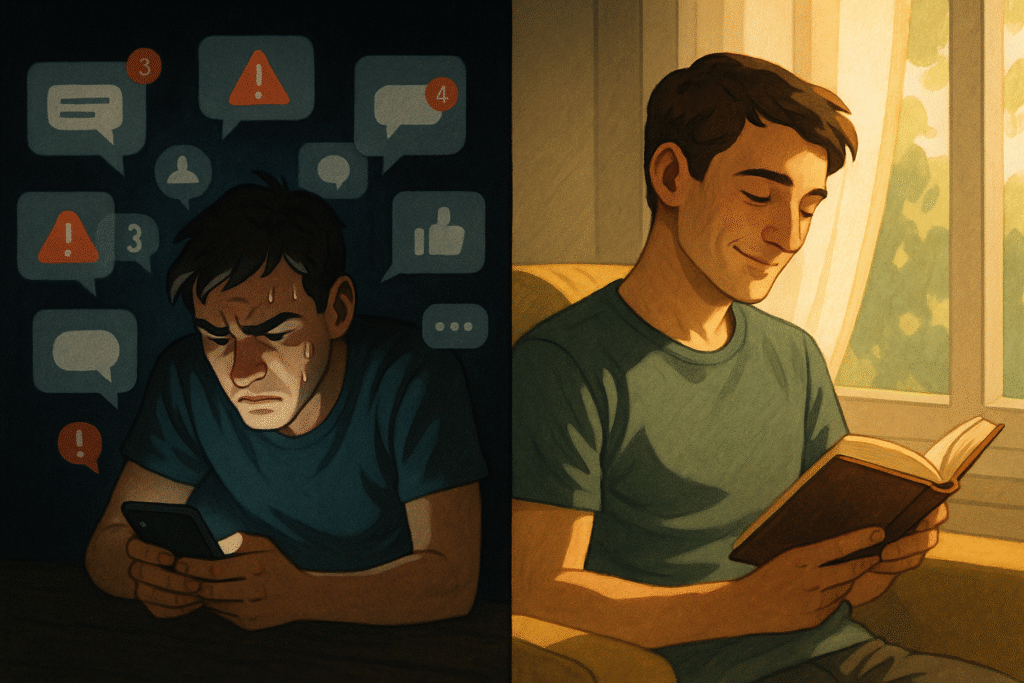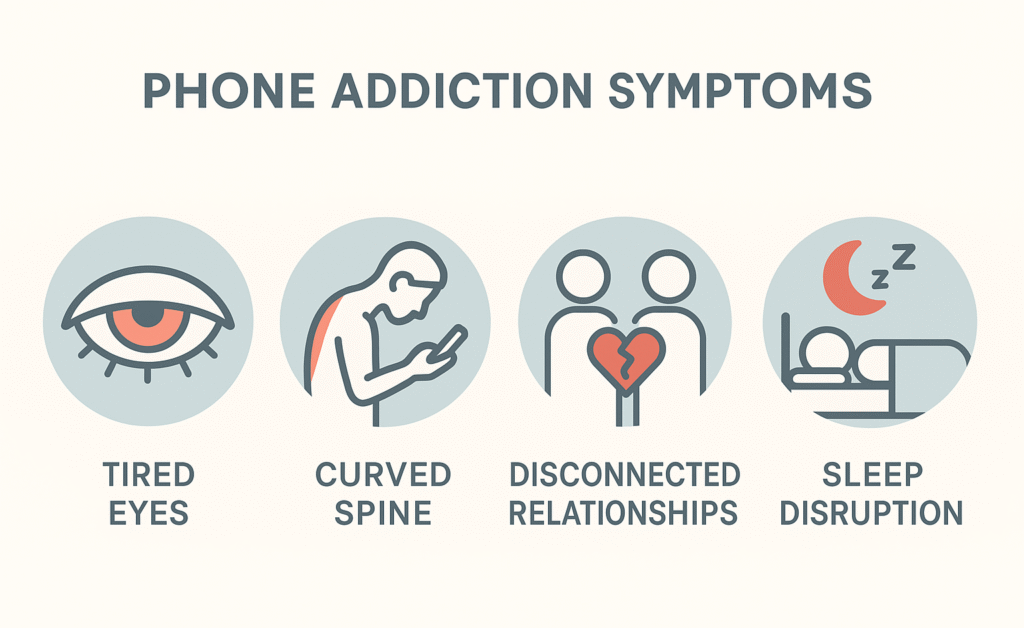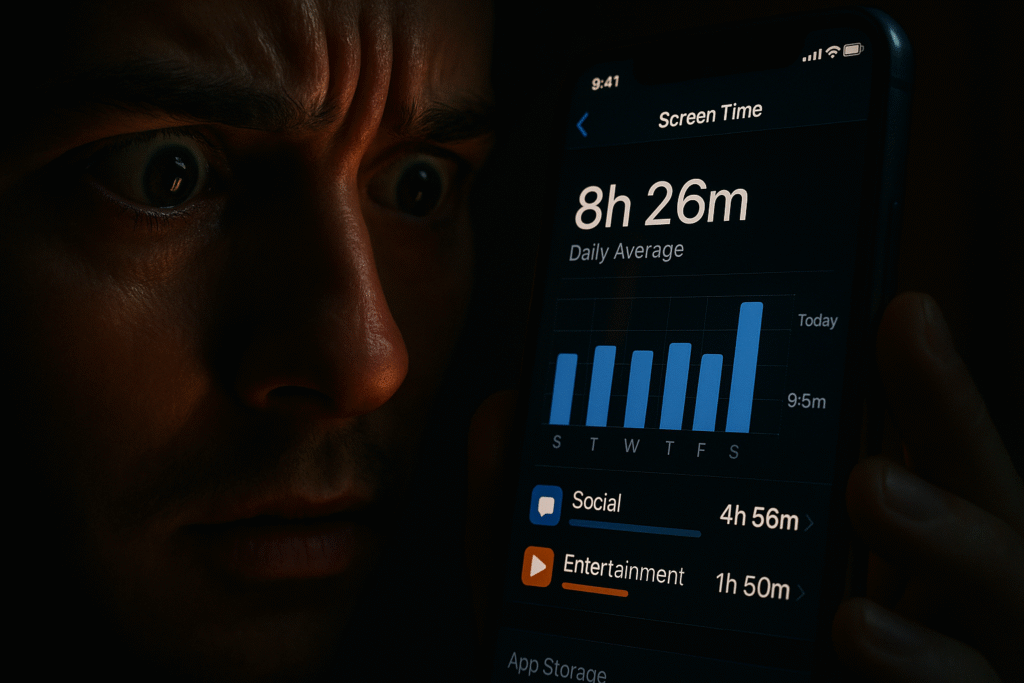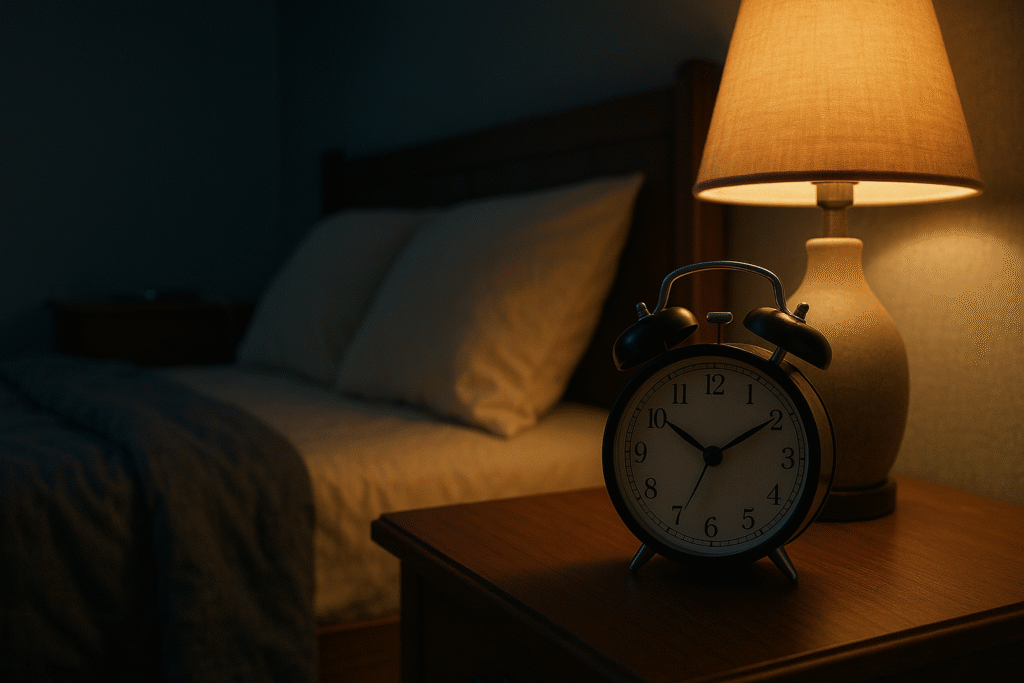How I Escaped My Phone Addiction in 3 Steps
Like millions of people worldwide, I found myself trapped in the endless scroll of social media, compulsively checking notifications, and feeling anxious whenever my phone wasn’t within arm’s reach. My screen time reports were embarrassing—averaging 8-10 hours daily. The turning point came when I missed an important family dinner conversation because I was mindlessly browsing Instagram. That night, I decided enough was enough. Here’s how I successfully broke free from my phone addiction using three strategic steps that transformed my relationship with technology.
Understanding Phone Addiction: The Silent Epidemic

Phone addiction, also known as nomophobia (fear of being without a mobile device), affects over 50% of smartphone users globally. The symptoms extend far beyond excessive screen time and include anxiety when separated from devices, sleep disruption, decreased productivity, and strained relationships.
Signs of Phone Addiction
| Physical Symptoms | Emotional Symptoms | Behavioral Symptoms |
|---|---|---|
| Eye strain and headaches | Anxiety when phone is unavailable | Checking phone first thing in morning |
| Neck and back pain | Irritability during phone downtime | Using phone during meals |
| Sleep disturbances | Fear of missing out (FOMO) | Difficulty concentrating without phone |
| Reduced physical activity | Depression from social comparison | Phantom vibration syndrome |
Step 1: Awareness and Assessment – Know Your Enemy

The first step in overcoming phone addiction is understanding the depth of your dependency. You cannot change what you don’t acknowledge. I started by conducting a thorough digital audit of my habits.
Digital Audit Checklist
| Assessment Area | Key Questions | Action Items |
|---|---|---|
| Screen Time Analysis | How many hours daily? Which apps consume most time? | Use built-in screen time tools, identify top 5 time-wasting apps |
| Usage Patterns | When do you check your phone most? What triggers usage? | Track hourly usage for one week, note emotional triggers |
| Physical Impact | Any eye strain, sleep issues, or posture problems? | Document physical symptoms, note correlation with usage |
| Social Impact | How does phone use affect relationships? | Ask family/friends for honest feedback |
Creating Your Baseline Report
After one week of honest tracking, create a baseline report. Mine looked shocking:
- Daily average: 9.2 hours
- Daily pickups: 247 times
- Most used apps: Instagram (3.1 hours), TikTok (2.4 hours), Twitter (1.8 hours)
- Peak usage times: 7-9 AM, 12-1 PM, 8-11 PM
This awareness phase is crucial because it transforms unconscious habits into conscious choices. You’ll be surprised by how often you reach for your phone without realizing it.
Step 2: Strategic Intervention – Redesign Your Environment

Environmental design plays a massive role in behavior change. Instead of relying on willpower alone, I restructured my physical and digital environments to make phone addiction inconvenient and healthy alternatives easier.
Physical Environment Changes
| Location | Old Setup | New Setup | Result |
|---|---|---|---|
| Bedroom | Phone on nightstand | Phone charges in kitchen | Better sleep quality |
| Workspace | Phone on desk, notifications on | Phone in drawer, Do Not Disturb mode | Increased focus |
| Living Room | Phone always in hand | Designated phone basket | More present conversations |
| Car | Phone mounted, easily accessible | Phone in glove compartment | Safer driving |
Digital Environment Optimization
The key is making your phone less appealing and more functional rather than entertaining.
App Management Strategy
| Action | Purpose | Implementation |
|---|---|---|
| Delete social media apps | Remove primary addiction sources | Keep only messaging apps for communication |
| Turn off non-essential notifications | Reduce interruption triggers | Allow only calls, texts, and calendar alerts |
| Use grayscale mode | Make phone visually less appealing | Enable in accessibility settings |
| Remove apps from home screen | Create friction for access | Keep only essential utilities visible |
Replacement Activities Table
| Phone Habit | Healthy Alternative | Time Required | Benefits |
|---|---|---|---|
| Morning social media scroll | Reading or meditation | 15-30 minutes | Mental clarity, reduced anxiety |
| Boredom browsing | Walk or stretching | 10-15 minutes | Physical activity, creativity boost |
| Pre-sleep scrolling | Journaling or reading | 20-30 minutes | Better sleep, reflection |
| Waiting period phone use | Deep breathing or observation | 2-5 minutes | Mindfulness, stress reduction |
Step 3: Sustainable Habits and Boundaries – Long-term Success

The final step focuses on creating sustainable systems that prevent relapse while maintaining the benefits of technology. This isn’t about becoming a digital hermit—it’s about intentional technology use.
Daily Routine Framework
| Time Period | Phone Rules | Alternative Activities | Success Metrics |
|---|---|---|---|
| Morning (6-9 AM) | No phone for first hour | Exercise, breakfast, planning | Energy levels, mood |
| Work Hours (9 AM-5 PM) | Phone in airplane mode, check every 2 hours | Deep work sessions, face-to-face conversations | Productivity, focus quality |
| Evening (5-8 PM) | Limited to essential communication | Family time, hobbies, cooking | Relationship quality |
| Night (8 PM-bedtime) | Phone charging outside bedroom | Reading, relaxation, preparation for next day | Sleep quality, morning energy |
Weekly Digital Detox Schedule
I implemented a structured approach to maintain balance:
| Day | Digital Detox Level | Activities | Duration |
|---|---|---|---|
| Monday-Friday | Moderate restrictions | Work-focused phone use only | 8 hours detox |
| Saturday Morning | Complete detox | Outdoor activities, exercise | 4 hours |
| Sunday Afternoon | Social media break | Family time, meal prep | 3 hours |
Emergency Protocol
Creating exceptions prevents the all-or-nothing mentality that leads to failure:
- True emergencies: Full phone access immediately
- Work urgencies: 15-minute focused phone sessions
- Social obligations: Designated communication windows
- Travel days: Relaxed restrictions with mindful usage
Results and Long-term Benefits
After three months of following this three-step approach, my transformation was remarkable:
Quantitative Results
| Metric | Before | After | Improvement |
|---|---|---|---|
| Daily screen time | 9.2 hours | 3.1 hours | 66% reduction |
| Daily phone pickups | 247 times | 89 times | 64% reduction |
| Sleep quality (1-10 scale) | 4/10 | 8/10 | 100% improvement |
| Productivity hours | 2-3 hours | 6-7 hours | 150% increase |
Qualitative Benefits
The improvements extended far beyond numbers. My relationships deepened, creativity flourished, and anxiety levels dropped significantly. I rediscovered the joy of single-tasking and found myself more present in conversations and experiences.
Your Digital Freedom Awaits

Breaking free from phone addiction isn’t about perfection—it’s about progress and intentionality. These three steps—awareness and assessment, strategic intervention, and sustainable habits—provide a proven framework for reclaiming your time, attention, and life from the grip of digital devices.
Start with step one today. Conduct your digital audit and face the reality of your phone usage. Remember, the goal isn’t to eliminate technology but to ensure it serves you rather than enslaves you. Your future self will thank you for taking this crucial step toward digital wellness and authentic living.
The journey to digital freedom begins with a single conscious choice. Make that choice today, and discover the profound peace that comes from being truly present in your own life.






Leave a Comment